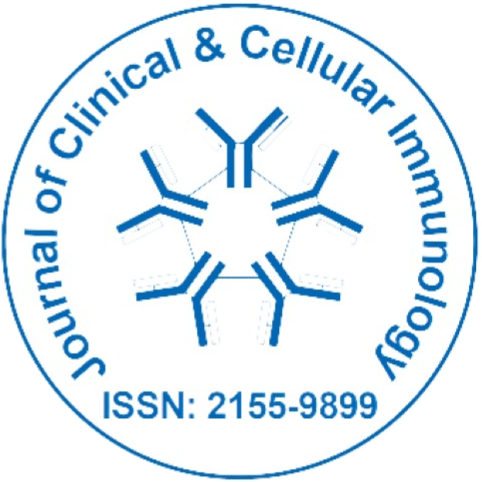
Journal of Clinical and Cellular Immunology
Open Access
ISSN: 2155-9899

ISSN: 2155-9899
Omar Bagasra
Accepted Abstracts: J Clin Cell Immunol
Background: Recent studies have shown that co-infection with GBV-C in individuals infected with HIV-1 results in longer survival and higher CD4+ T cell counts compared to monoinfected individuals. Methods and Findings: We performed comparative global miRNA PCR-based 704 miRNA-microarray analyses of Jurkat CD4+ T cell line infected with GBV-C and compared with uninfected cells. 125 miRNAs were differentially expressed (> 2 folds). Thirteen miRNAs were significantly upregulated from 4-25-fold (miR-1259, miR-297, miR-769, miR-520e, miR-525, miR-613, miR-205*, miR- 549, miR-337, miR-518d-3p, miR-518f*, miR-1238 and miR-325) and 16 miRNAs were significantly downregulated from 4-5-fold (miR-144*, miR-27a*, miR-556-3p, miR-412, miR-512-5p and miR-34b). By utilizing gene alignment tools, we discovered 11 miRNAs (miR-548b, miR-let-7e, miR-508, miR-483, miR-659-3, miR-362-5, miR-574-3, miR-195-3, miR-16-2, miR-656 and miR-24-1) that were differentially expressed and also shared >75% mutual homologies to HIV-1. By utilizing pSuper miRNA expression vector we cloned and transfected each of the 11 miRNAs into three CD4+ cell lines; Sup-T1, Jurkat and HeLa-CD4+ and after the development of stably transfected cell lines, we challenged each of the cell lines with the cloned NL-4-3 HIV-1 and measured the potential inhibitory activities of each of the miRNAs. Expressions of the HIV homologous miRNAs significantly inhibited HIV-1 replication (p< 0.001), varying from 55-86%, as compared to empty vector (ΔNC) controls, in all three cell lines. In addition, we discovered three miRNAs (miR-155, miR- 214 and miR-125b) which are known to be upregulated during T-cell-activation were significantly downregulated and may be associated with GBV-C co-infected blocking of cell-activation. Conclusion: This is the first study that identifies the mechanism that enables the beneficial effects of GBV-C at molecular levels. We propose that utilization of a genetically modified version of GBV-C could be a powerful tool in HIV-1 prevention in high risk groups.
Omar Bagasra received Ph.D in 1979 from University of Louisville and M.D in 1989 from Universidad Autonoma de Ciudad Juarez, Mexico. He is Professor of Biology in South Carolina Center for Biotechnology. His research interests are in field of Cancer Immunology and Molecular basis of infectious diseases.